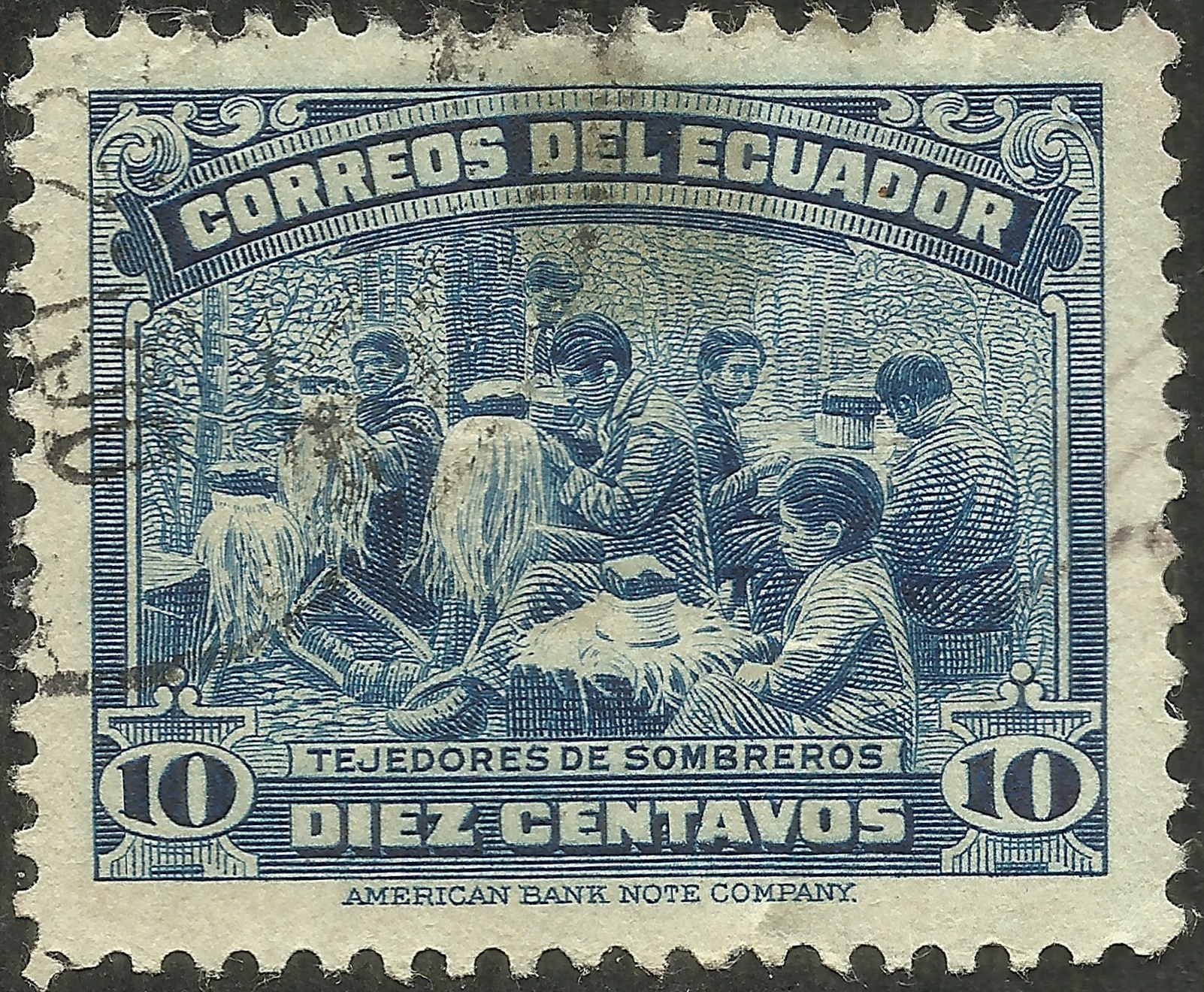
Yes, I do learn something new everyday when preparing articles for A Stamp A Day. Often, the stamps lead me on wholly unexpected journeys. Having spent much of my life in the American Southwest, I tend to mix Spanish and English: Today, I was going through scans of stamps from Ecuador and translating inscriptions in my head. I came close to choosing one that translated to “patriotic stamp” but then came upon Scott #363 which I read as “sombrero weavers”. My first thought was, “What an odd thing to put on a stamp,” (EVERYTHING imaginable has been pictured on stamps. Well, almost.) I thought I’d be writing about something similar to the Mexican sombrero, a type of hat I’ve owned on numerous occasions. However, I then realized that sombrero is actually simply Spanish for “hat” and I sought out the types of hats that are woven in Ecuador. It’s actually something else entirely…the Panama hat!
The popular “Panama” hat originates from Ecuador and has never been made in Panama!
Traditionally, these hats were made from the plaited leaves of the Carludovica palmata plant, known locally as the toquilla palm or jipijapa palm, although it is a palm-like plant rather than a true palm. Panama hats are light-colored, lightweight, and breathable, and often worn as accessories to summer-weight suits, such as those made of linen or silk. The tightness, the finesse of the weave, and the time spent in weaving a complete hat out of the toquilla straw characterize its quality. Beginning around the turn of the 20th century, these hats became popular as tropical and seaside accessories owing to their ease of wear and breathability.
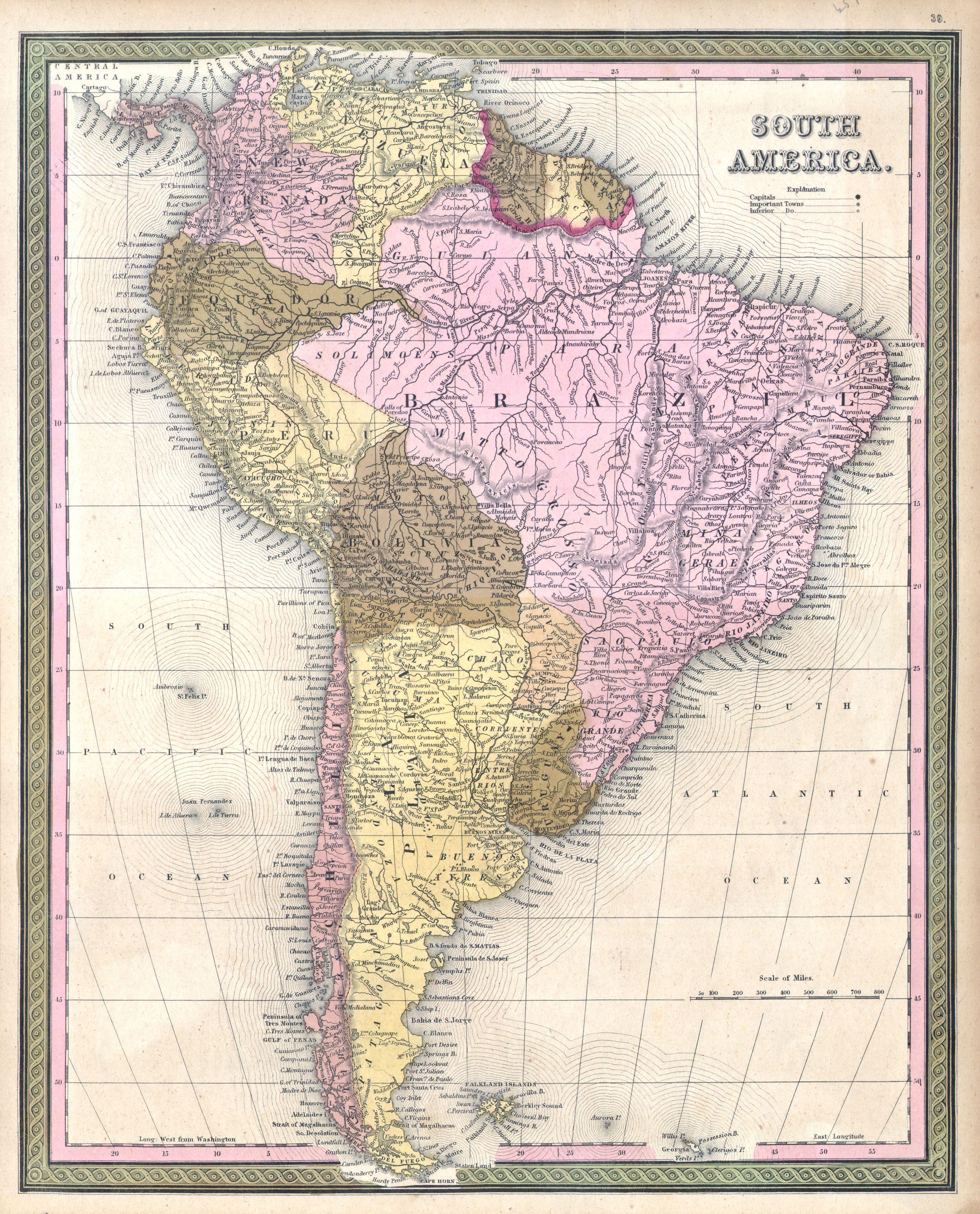
Sombreros (Spanish for “hat”, literally “shadower”), on the other hand, in English refers to a type of wide-brimmed hat from Mexico, used to shield from the sun. It usually has a high pointed crown, an extra-wide brim (broad enough to cast a shadow over the head, neck and shoulders of the wearer, and slightly upturned at the edge), and a chin string to hold it in place. In Spanish, sombrero refers to any wide-brimmed hat. The concept of a broad-brimmed hat worn by a rider on horseback can be seen as far back as the Mongolian horsemen of the 13th century. In hot, sunny climates hats evolved to have wide brims, which provided shade. The exact origin of the Mexican sombrero is unknown, but it’s usually accepted that the hat originated with Mestizo cowboys in Central Mexico. Although sombrero is usually taken to refer to the traditional Mexican headwear, the term sombrero predates this item of clothing, and is and has been applied to several differing styles of hat, since it is the actual word for hat in Spanish.
Back to Ecuador, the art of weaving the traditional toquilla hat was added to the UNESCO Intangible Cultural Heritage Lists on December 6, 2012. The Panama hat is an Intangible Cultural Heritage, a term used to define practices, traditions, knowledge, and skills communities passed down from generation to generation as part of their cultural heritage.
The toquilla straw used in these hats is found only in Manabí, on the Ecuadorean coast, and is the secret of the hat’s light weight, flexibility and durability.
In the 1500s, the invading Spanish conquistadors found in Ecuador a head piece woven from the toquilla palm. They presumed that the light, almost translucent, material was in fact vampire skin, much to the amusement of the locals. Weaving evolved as a cottage industry in the early to mid-1600s along the Ecuadorian coast as well as in small towns throughout the Andean mountain range. Hat weaving and wearing grew steadily in Ecuador through the 17th and 18th centuries. People referred to the hats as Jipijapa, Toquilla, or Montecristi hats at the time (the latter two phrases are still in use today). Historically and traditionally, the hats come from the villages around Montecristi, a town of 15,000 about 90 miles up the coast from Guayaquil, although nowadays the overwhelming majority are made cheaply in the big commercial center of Cuenca, high up in the Andes.
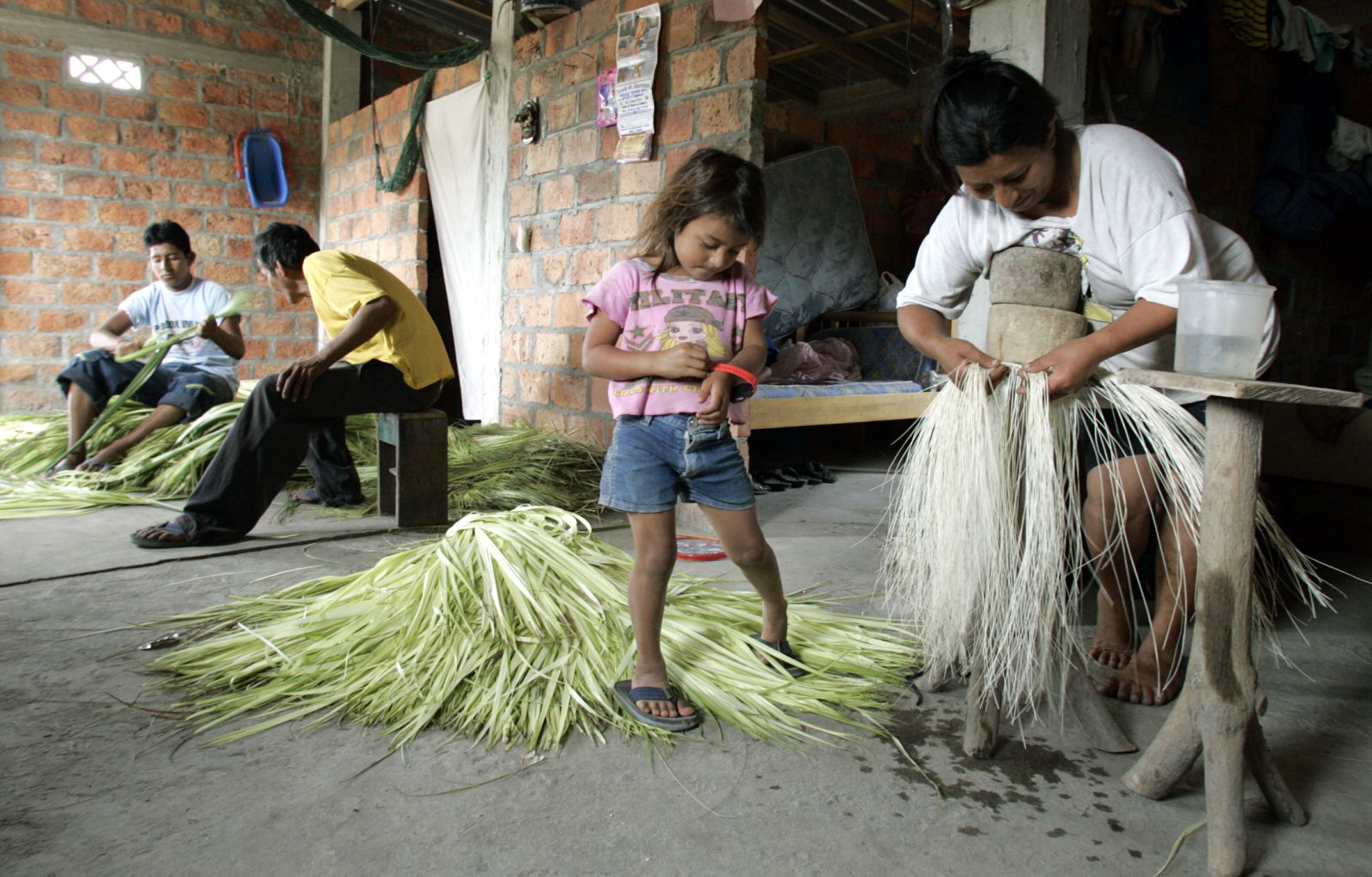
In 1835 a 39-year-old exiled Spanish military officer named Manuel Alfaro arrived in Ecuador having fled Spain as a result of backing the wrong side in the Carlista Wars. He settled in Montecristi to make his name and fortune in exporting the local hats. The hats were popular among sailors and travelers, but Alfaro had visions of scale. He organized the weavers and set up straw plantations to secure his supply, then went into the export business, shipping thousands of hats up north to the bustling seaports on the Isthmus of Panama. Cargo ships from Guayaquil and Manta were filled with his merchandise and headed to the Gulf of Panama. His business prospered as more and more Gold Rush prospectors arrived and passed through Panama needing a hat for the sun.
One of the first towns to start weaving the hats in the Andes is Principal, part of the Chordeleg Canton in the Azuay province. Straw hats woven in Ecuador, like many other 19th and early 20th century South American goods, were shipped first to the Isthmus of Panama before sailing for their destinations in Asia, the rest of the Americas and Europe. Travelers would tell people admiring their unique hats that they bought them in Panama. So, the hats quickly became known as “Panama hats.”
The term was being used by at least 1834. The popularity of the hats increased in the mid-19th century when many miners of the California Gold Rush traveled to California via the Isthmus of Panama and Pacific Mail Steamship Company. By the 1850s, Alfaro was exporting more than a quarter of a million hats a year and had become wealthy. Life got even sweeter after the Paris Exposition in 1855. A Frenchman who had been living in Panama presented Napoleon III with an extremely finely woven Panama hat. His Highness loved it. He wore it everywhere. Panama hats not only became in vogue but stayed there, an enduring gentleman’s spring and summer fashion, the finer the weave the better.

In 1904, U.S. President Theodore Roosevelt visited the construction site of the Panama Canal and was photographed wearing a Panama hat, which further increased the hats’ popularity. Roosevelt used his natural ability to drum up publicity by posing for a series of photos at the Panama Canal construction site. Photographic technology was relatively new at the time, and President Roosevelt wasn’t shy about using the press to his advantage. Photos of his visit showed a strong, rugged leader dressed crisply in light-colored suits sporting Ecuadorian made straw Panama hats.
Money was no object, not with the likes of J.P. Morgan, Edward VIII and Al Capone all being aficionados. A “Talk of The Town” piece published in The New Yorker in July 1930 mentions the thousand-dollar Panama hat for sale at Dobbs Department Store in an age when a factory-fresh Buick would set you back only $500.
“We used to get a lot of good business out of Cuba back in the ’50s, before the revolution,” said Rosendo Delgado in a 2015 NPR interview. The doyen of old-time hat dealers in Montecristi, now nearly 90, Delgado has been dealing in Panama hats since he was a teenager helping out in his father’s and grandfather’s hat business. “The rich sugar planters back then would think nothing of spending a couple thousand dollars to get the very best hats.”
While there are still plenty of aficionados who will pay big money for a Montecristi superfino, there are few people left who are able to weave them. The old weavers have died or lost, through advanced age, the sharp eyes and nimble fingers required to weave the very best. For the most part their children have other aspirations. Production in Ecuador is dwindling, due to economic problems in Ecuador and competition from Chinese hat producers.

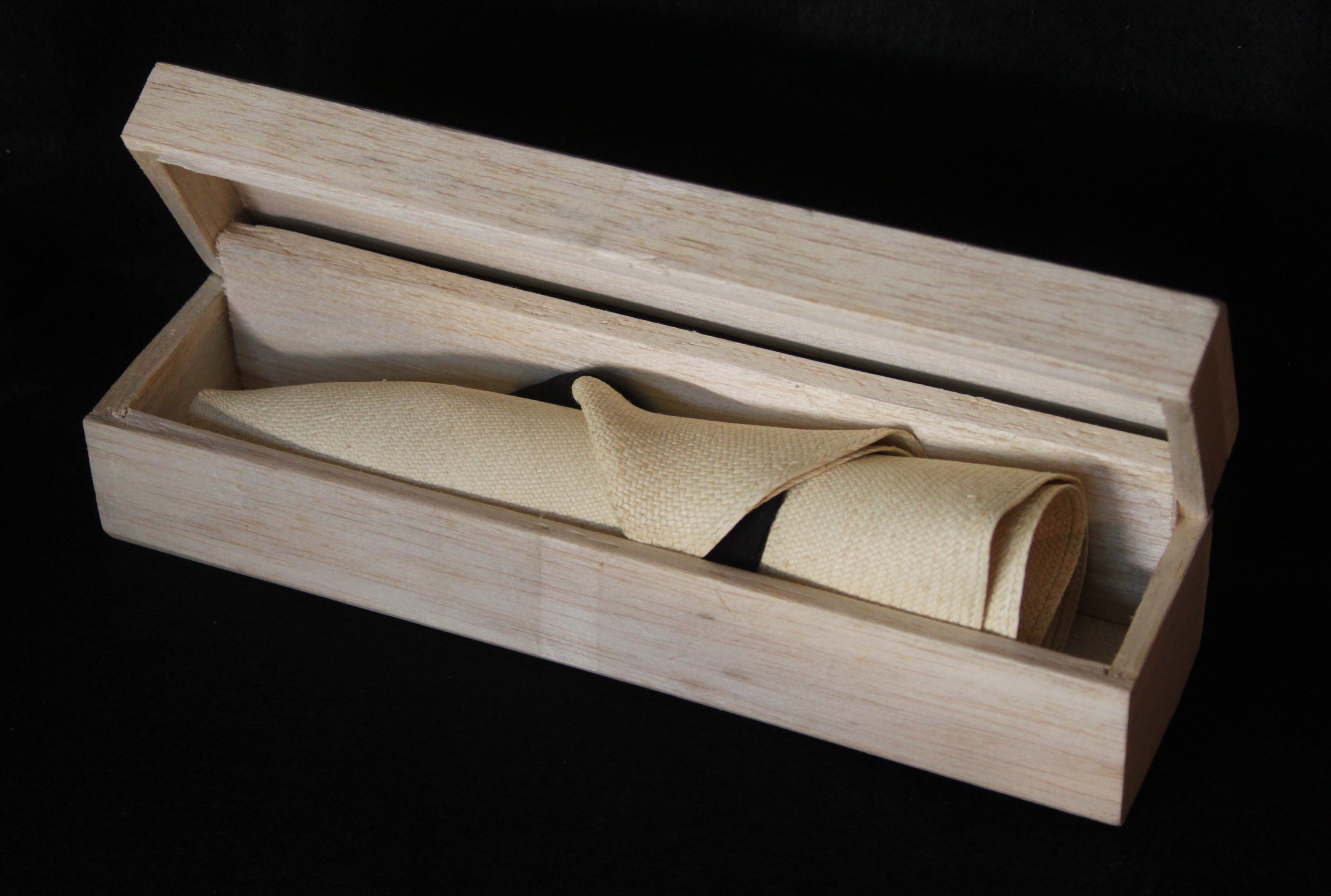
The two main processes in the creation of a Panama hat are weaving and blocking. The two most common types of weaves are the Cuenca and Brisa. The Cuenca weave has the appearance of a herringbone pattern and utilizes slightly more straw than the Brisa weave. The Brisa weave has the appearance of small diamonds/squares. This type of weave is less intricate but perceived as finer than the Cuenca weave by some as it is lighter. Other types of weaves include the Crochet, Fancy, Torcido, and New Order.
The quality of a Panama hat is defined by the tightness of the weave. The fine weave of the hat was ideal for protection against the tropical sun. Historically, to measure the tightness of the weave, a simple square tool that looks like a frame for a one-inch picture was used. The aperture of this frame was 25mm, or about 1 inch. The regulator would set this frame one inch from the edge of the hat’s brim edge, and then count the peaks of the cross weaves, called carerra, moving in a parallel direction. The tighter the weave, the more carerras were counted. That number would be multiplied by two and reconciled against a grading chart. A highly refined grade 20 would consist of 16 carerras.
The price of these hats depends on the time and quality that a weaver put in to the hat. A master weaver could take as long as eight months to weave a single hat. Weavers could sell a single hat to buyers for $200. Once the hat is sold to a buyer it then would pass through more people who would “finish the brim, shape it, remove imperfections, bleach the straw, and add interior and exterior brands.” After this one hat has been through at least six people it can then be sold outside of Ecuador for $450 to $10,000. The best hats can sell for up to fifty times more than what one weaver is paid for eight months of labor.
The best quality hats are known as Montecristis, The rarest and most expensive Panama hats are hand-woven with up to 3000 weaves per square inch. In February 2014, Simon Espinal, an Ecuadorian 47-year-old Panama hat weaver considered to be among the best at his craft, set a world record by creating a Panama hat with four thousand weaves per inch that took eight months to handcraft from beginning to end.
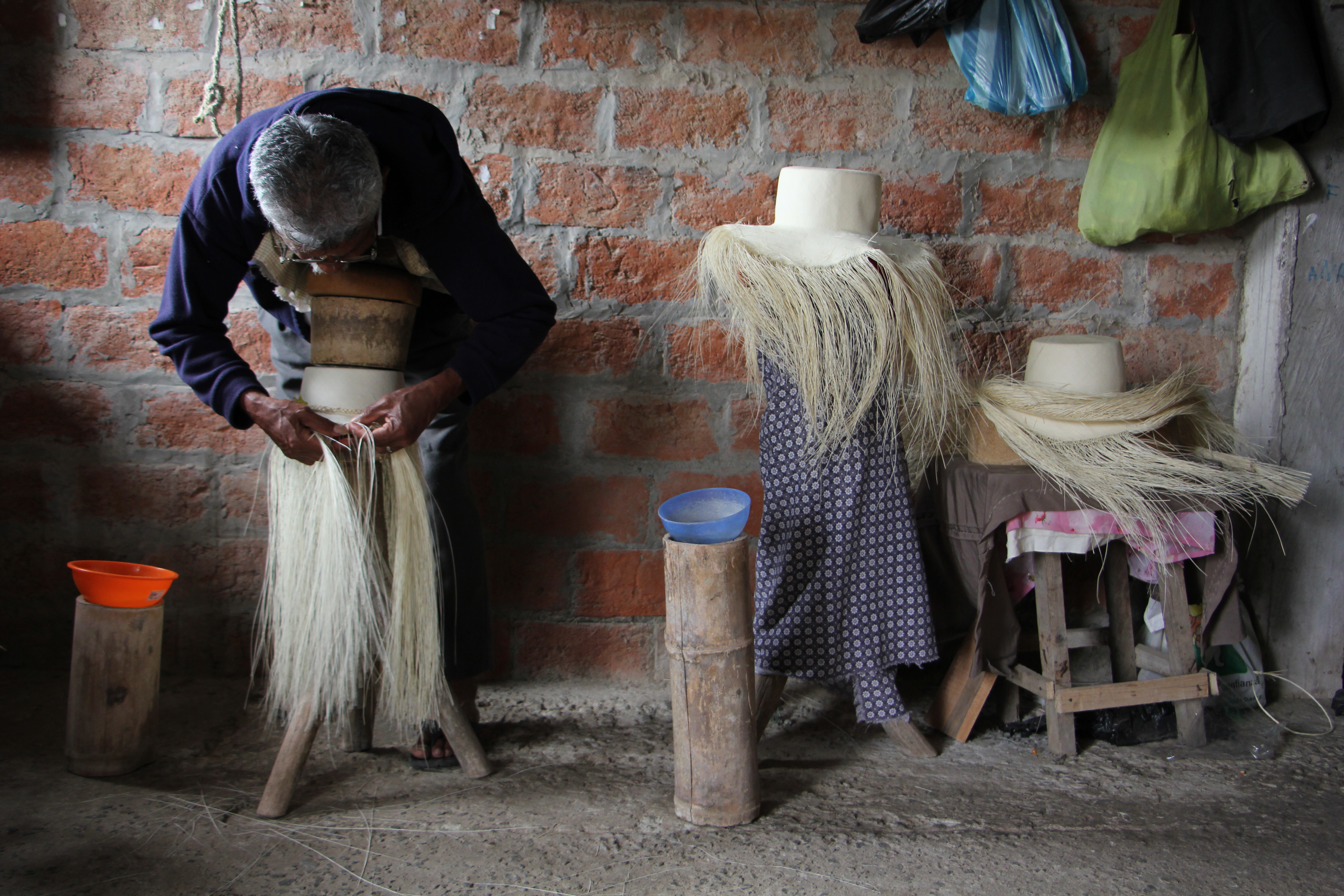
The big hat companies in Cuenca and Quito routinely sell commercial grade hats as “genuine” Montecristis, as do prominent hatters and hat shops around the world. Espinal, by contrast, makes perhaps three hats a year.
It isn’t just scarcity and fineness of weave that distinguish a Montecristi Panama from the rest. It’s an altogether different species of hat, from the intricate preparation of the straw to the pattern of weave itself. Montecristi’s weavers, steeped in hat-making tradition, use the more artistic liso (herringbone) weave while those in the big commercial hat-weaving centers like Cuenca use the faster and lighter, economically efficient brisa weave. The liso weave is a tight, snug herringbone-patterned weave; brisa is a looser, square pattern.
According to popular lore, a superfino Panama hat can hold water, and, when rolled up, pass through a wedding ring.
The hats fell out of favor in the second half of the 20th century, but data from Ecuador’s Central Bank suggest demand is rising. The country exported finished hats worth $6,000,000 in 2013, up from a piffling $517,000 in 2003. The headwear goes mostly to Italy, Britain and the United States, where they can fetch anything from a few dollars to several thousand for the most intricate designs. According to Andrés Ycaza of the Ecuadorean Intellectual Property Institute (IEPI), a skilled weaver will earn only about $800 for a hat worth close to $2,000, which can take months to make. Without a premium attached to its Ecuadorean origins, it is hard to drive prices higher.
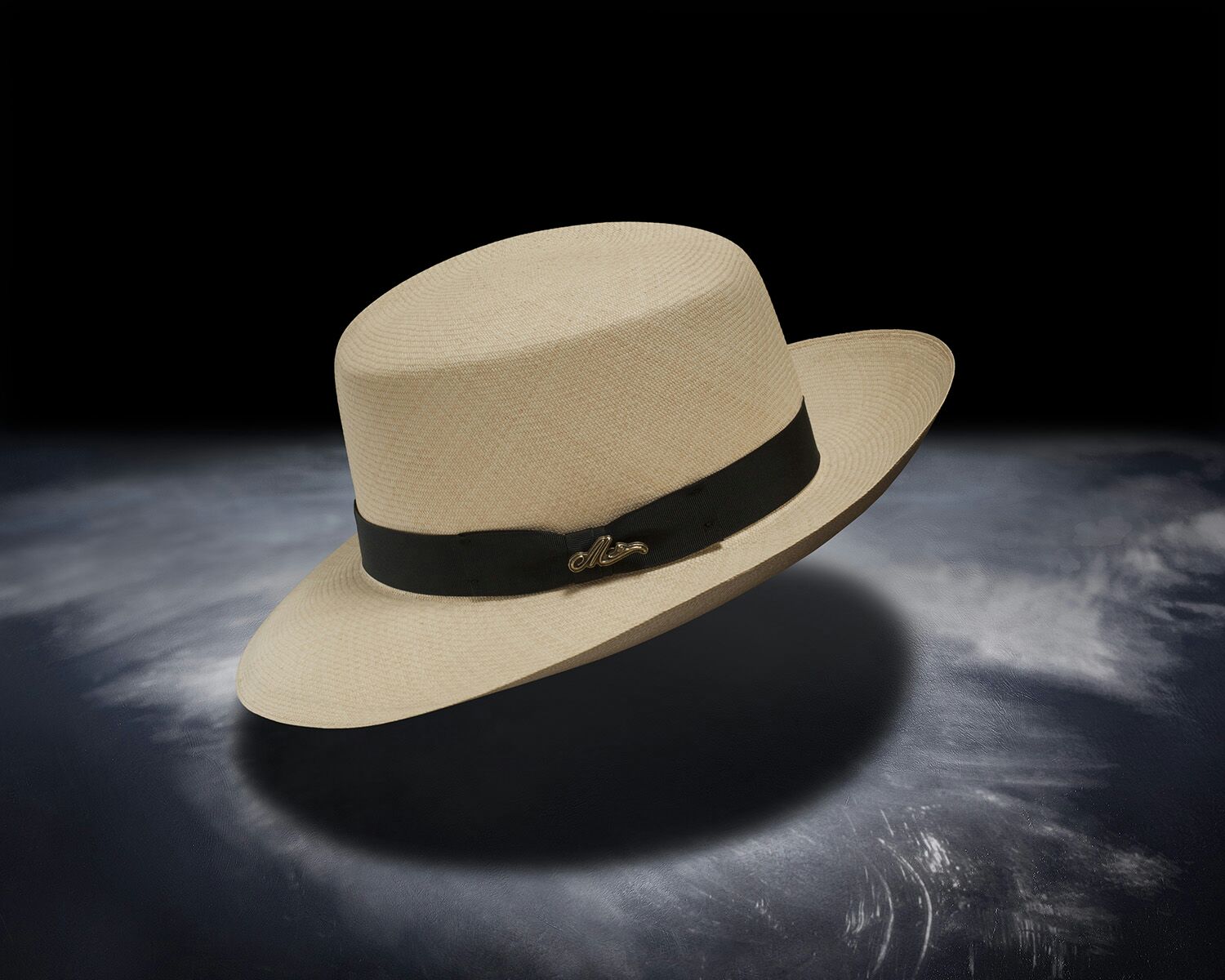
Here in Thailand, I’ve seen Panama hats for sale at the local weekend market. I would guess that these are actually the tamsui hat — a straw hat made in Formosa (now Taiwan) to directly compete with the Panama in the early 20th century. Tamsui hats were made from Pandanus odoratissimus fiber, which grew plentifully on the island. As they retained their whiteness, these hats were washable, and could be folded and carried about without damage, Tamsui hats replaced the rather costlier Panama in East Asia in the early 20th century.
Scott #363 is a 10-centavo blue stamp engraved by the American Bank Note Company and issued on August 19, 1937, perforated 11½. The remaining four stamps in the set pictured an Andean landscape (2c green, Scott #361); Atahualpa, “The Last Inca” (5c deep rose, Scott #362); a coastal landscape (20c deep rose, Scott #364); and gold washing (1-sucre olive green, Scott #365). All five stamps were also overprinted OFICIAL for government use in 1937 (Scott #O196-O200).



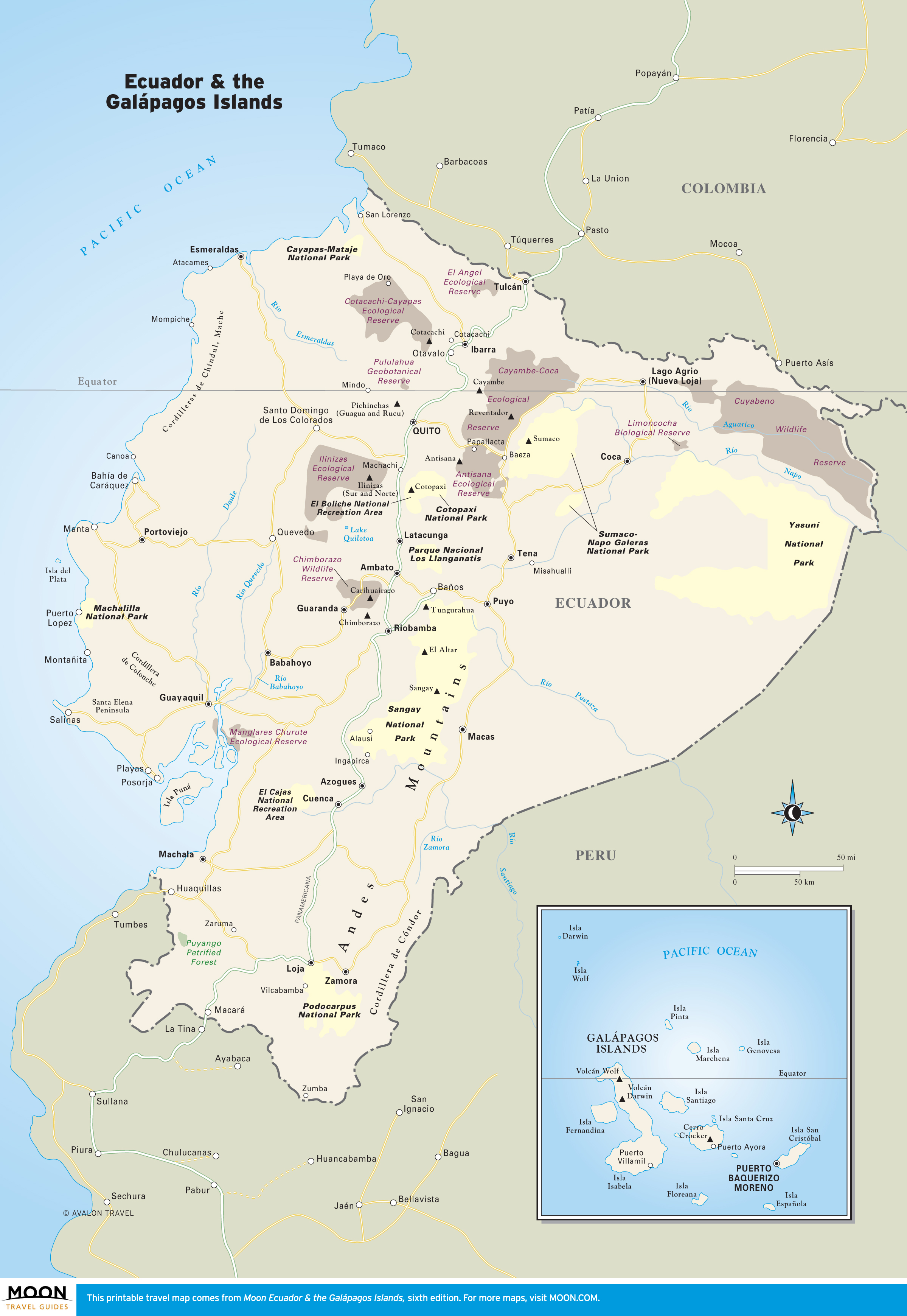
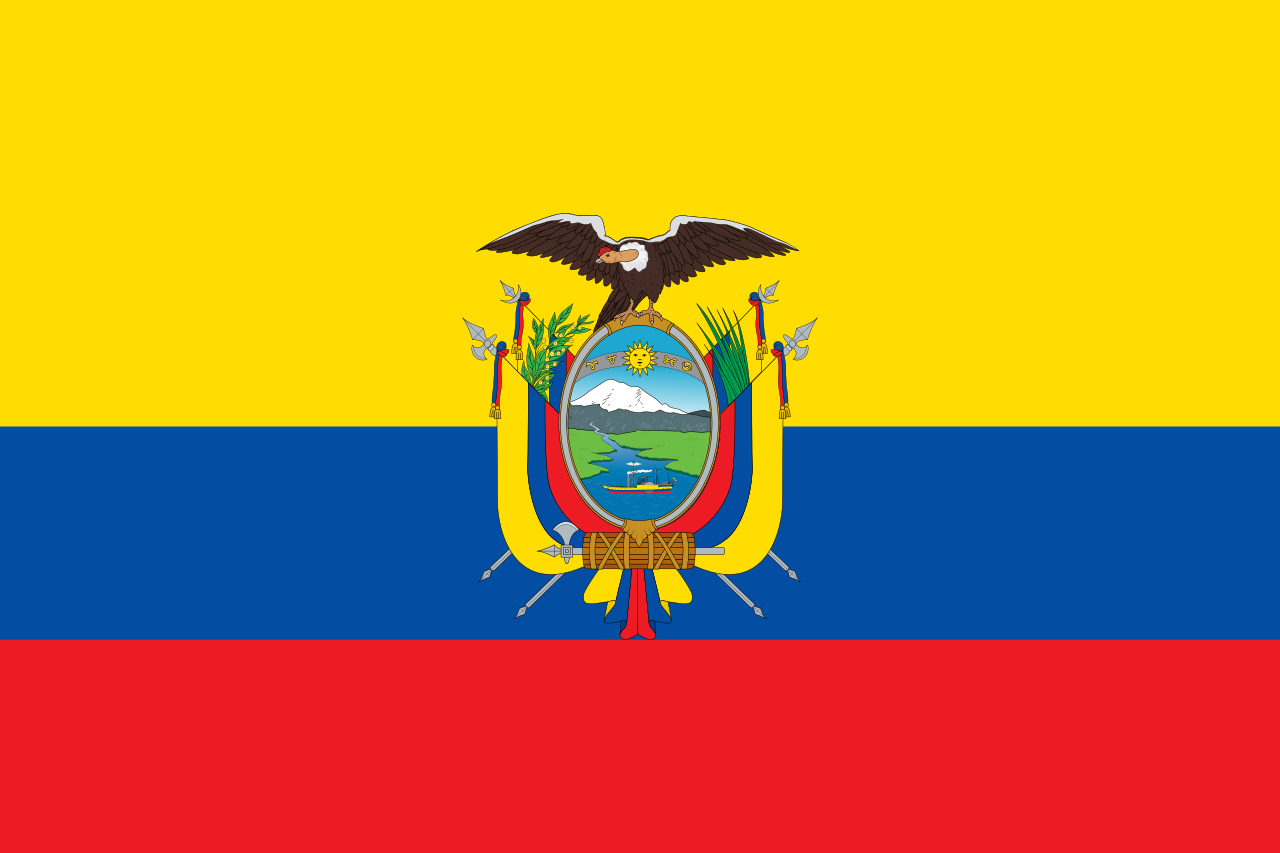
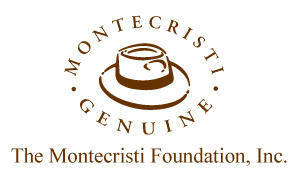
One thought on “Hat Weaving in Ecuador”